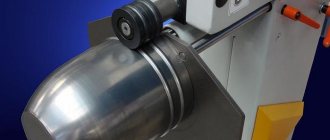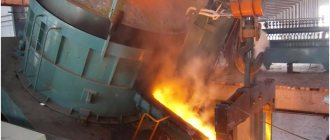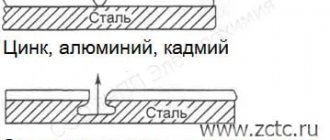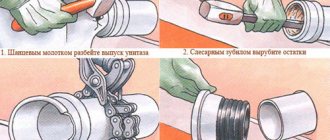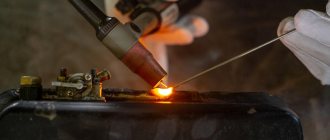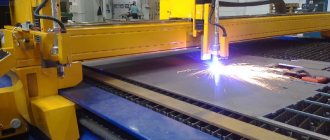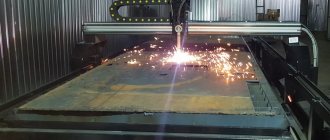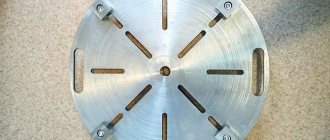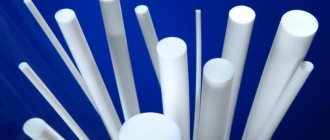It’s worth starting with the fact that acrylic glass still differs from classic plexiglass in a number of properties and, therefore, in order to understand what you are dealing with, you need to be able to distinguish between them. First of all, of course, the difference lies in a slightly different manufacturing procedure, but these are nuances. The main difference is (and you will understand this as soon as you start working with plastics) that acrylic glass is transparent. Technically, it has all the properties of ordinary glass, but is much stronger. Therefore, when choosing a laser machine for cutting acrylic, keep in mind that its power should be enough to cut through such a capricious material as transparent plexiglass.
Bending plexiglass - description of the process
There are several methods for giving the desired shape to this material, and each of them will require its own tools and devices. Next - about each of these methods and about the preparatory operations (which are common).
Technology
Before processing, acrylic glass must be well cleaned, without the use of abrasives and aggressive chemicals. It is only permissible to use gasoline (kerosene) to remove oil stains, if any. Acetone and other solvents can ruin the material , so they are not used.
Then it is advisable to dry the plexiglass sheets - the thicker it is, the longer it will take to do this. One millimeter of thickness takes an hour and a half (on average). The temperature should be about 80 degrees. Thorough drying is especially important when the plexiglass sheets were stored in humid conditions.
Now all that remains is to fix the prepared sheet well, and then use one of the methods listed below. Most of them involve heating the surface to be bent, but there is also a cold method.
Cold bending
Acrylic glass is so flexible that it can be bent even without heating. But the radius should not be too small. The minimum is the sheet thickness multiplied by 230. Therefore, the cold method has limited use - for example, complex small-sized products cannot be made with it. Even ordinary corners.
Thermobending
In this case, local heating occurs at the place where the future bend is located. By changing the width of this place, it is possible to adjust the bending angle. You can use the following as a heat source:
- a construction hairdryer (directing its jet not across, but along the fold);
- hot nichrome wire (string);
- a special machine - a thermal designer.
There is another method called molding. It consists of heating the entire surface of the sheet (which should be no thicker than 10 centimeters). However, this is too expensive, so it is rarely used.
How to bend the material correctly?
Heating on only one side is permissible only with a plexiglass thickness of up to five or six millimeters. If it is thicker, then you will have to heat it on each side in turn. However, machines usually have the ability to heat on both sides - this is very convenient.
General note: the width of the heated zone should not be less than three times the thickness of the acrylic sheet. In this case, the sheet bends not in the direction from which the heat comes, but in the opposite direction.
Uniform cooling of the material is also important - it should not occur very quickly. As a rule, it will take two thirds of the time it took to heat up. The temperature of the cooled acrylic will be 60 or 70 degrees.
Radius bending
This method is applicable when you need to work with large sheets.
To do this, a metal pipe is selected according to the required bending radius. There should be no traces of rust or paint on it. This pipe is firmly fixed and then heated to a high temperature (90 to 100 degrees). A sheet of plexiglass, treated with a soda solution, is attached to the pipe using clamps and wrapped around it. Thus, the product acquires the desired shape, fixed after cooling.
Temperature
It is worth remembering that there are two types of acrylic glass, differing in the manufacturing method. This is extrusion and injection molded plexiglass. The latter has a higher molding temperature - from 150 to 170 degrees. For extruded material it ranges from 150-155 degrees. Therefore, before work you need to clarify the type of plexiglass.
Accordingly, our task is to heat the material exactly to these temperature values. Under no circumstances should you overheat - otherwise, instead of bending, we will get a shapeless molten mass. You should consider a range from 140 to 160 degrees - this is what experts advise. In this case, you will have to apply a minimum of physical force.
Night light made of LED strip and plexiglass
I continue the theme of my crafts.
This time we will make a night light from LED strip and plexiglass.
My daughter does gymnastics, and I decided to please her. My daughter’s team is called “Kubanushka” (Kavkazskaya station, Krasnodar region). And what could be better than a night light with the name of the team?
I prepared these boards with spacers and cut out the base of the lamp from 4 mm plexiglass.
I wanted thicker plexiglass, but 4 mm is the maximum thickness that we found. So we will make from what we have. Also, we will need a set of LED strip 1.5 m 6 W 160 Lm/m 3000 K
which I bought in Leroy. The set contains a switch; in principle, you can buy it with a remote control if you want to repeat it. This will probably be even better, but it will also be more expensive.
We make a drawing in a vector editor and mirror it:
The reflection is needed so that you can glue the reflected image from the inside to the plexiglass and engrave it, then after all the work is done and when turned over, we will get a normal picture. The drawing itself will be on the back of the night light.
Well, then we engrave with Dremel. My wife carefully helped me out
